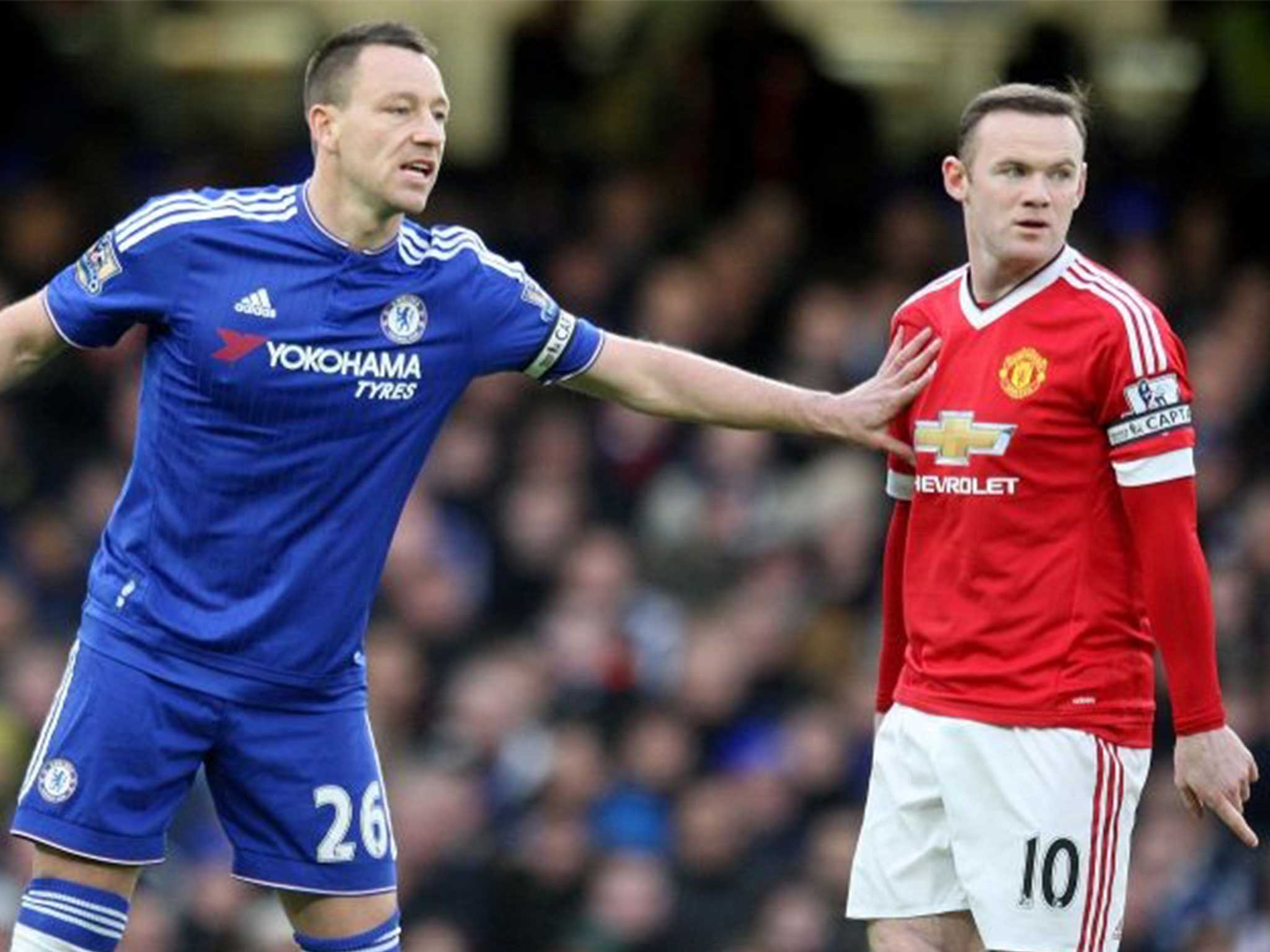Chelsea vs Manchester United: Was this the final clash between those great warriors John Terry and Wayne Rooney?
While United at least are still in the chase for fourth, Chelsea are marooned in mid-table

In football, senior citizen status comes early. The combined ages of John Terry and Wayne Rooney only just add up to 65, but Terry is already being pensioned off by Chelsea and Rooney has become used to suggestions that Manchester United and England follow suit.
Terry may yet force a change of heart at Stamford Bridge, the FA Cup might throw them together, or they could meet again in China, football’s new El Dorado. The likelihood, however, is that this was the last contest between two of the game’s warriors and it was cruelly symbolic that it came with these once-great teams out of the title race and trying to rediscover their former selves.
While United at least are still in the chase for fourth, Chelsea are marooned in mid-table. It is an unfamiliar position for both men who, with their clubs, have been at the heart of the English game for much of this century, clashing with club, combining with country. They are not thought to be close but have many similarities, both emerging from working-class backgrounds to captain England, the yeoman service of each occasionally marred by indiscretions.
Terry first marked Rooney in 2002, a Football League Cup tie at Stamford Bridge that Chelsea won 4-1. Rooney, 17 and still at Everton, had already announced himself as a great talent with his memorable goal against David Seaman. Terry, 21, had just begun to cement his place in a Chelsea side on the cusp of great success.
Seven months later they played alongside one another for the first time, appearing as half-time substitutes for England against Serbia & Montenegro at Leicester. It was Rooney’s fourth cap, Terry’s debut. They would go on to play four tournaments together, sharing many dramas, before the national team’s ongoing soap opera took a serious twist when Terry, having won 72 caps, 34 as captain, quit in pique at the Football Association charging him with racially abusing Anton Ferdinand. Rooney now has the armband, and the century of caps Terry could have achieved.
They might have played together at club level too. Both flirted with Manchester City, before securing improved contracts, and Rooney was also on Jose Mourinho’s radar when he returned to Chelsea. Instead they remained in opposition, leading figures at the clubs which dominated the Premier League between Arsenal’s decline and Manchester City’s rise.
Chelsea vs Manchester United player ratings
Show all 22Rooney might have preferred playing alongside Terry rather than against him. The first dozen matches he played against the Londoner (four for Everton, eight for Manchester United) Rooney failed to score. When he finally did, in April 2008, United lost.
That was the first of six goals in 12 matches against Terry for Rooney, roughly on a par with his goals-per-game career average, but since September 2011 he has failed to score against Terry. This was their 26th match in opposition, with Rooney seeking his seventh goal, well below his usual ratio. They shook hands at the start, embraced at the end, and were rarely more than 20 yards apart in between. Rooney even marked Terry at Chelsea corners. But, aside from Rooney fruitlessly challenging Terry for headers, they were rarely in direct conflict.
If every match was like this Terry could play for Chelsea until he is 40. It was not just the protection afforded by Kurt Zouma’s pace, and the midfield shield of John Obi Mikel and Nemanja Matic, but also United’s lack of attacking vim in central areas.
Faced with Jamie Vardy, Harry Kane or Sergio Aguero Terry’s declining mobility could have been exposed, but Rooney, though five years younger, plays in a position where age bites quickly. Often isolated up front, he preferred to drop off into pockets of space to receive the ball and simply lay it off to his midfield or wide men. The young Rooney would have turned and run at the defence in that bullocking fashion. Only in injury time did he do that here. He was halted by Mikel the first time, the second he went by Branislav Ivanovic but his ambitious chip drifted over Thibaut Courtois and on to the roof of the net.
Rooney did contribute to Jesse Lingard’s fine goal, though his lay-off seemed aimed for Juan Mata, not the young Englishman. He also drew a smart save from Courtois from 20 yards, but his touch was awry in the penalty area and he rarely looked like maintaining his recent burst of goals.
Rooney is still a very fine player, but with his eye for a pass and awareness of space he would surely be better used in the No 10 role, especially in this United side with its pedestrian midfield and lack of forward runners. Not that anything Anthony Martial did, marginalised as he was on the left wing, suggested he would be a more potent No 9. It may be Rooney’s future with England too, feeding the likes of Kane, Vardy and Raheem Sterling.
Terry’s international career is behind him. He has not been adequately replaced, and maybe never will be by a like-for-like defender – the Premier League academy system is not producing such players. There was, though, a moment when Chris Smalling suggested he may be his heir apparent. Having made a tackle, he found himself lying face down as the ball rebounded. As the boots flew in, Smalling headed the ball away. Fifty yards off, Terry and Rooney looked on admiringly.
Subscribe to Independent Premium to bookmark this article
Want to bookmark your favourite articles and stories to read or reference later? Start your Independent Premium subscription today.

Join our commenting forum
Join thought-provoking conversations, follow other Independent readers and see their replies